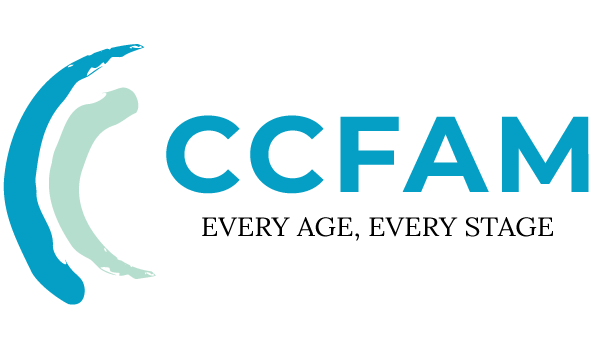17 Apr Counseling for Children: Helping Kids Thrive Emotionally
In today’s complex developmental landscape, emotional self-regulation is central to childhood wellness. Evidence-based counseling for children uses developmentally appropriate strategies that build resilience and healthy coping skills. This guide explains how child therapy addresses DSM-5–aligned emotional and behavioral challenges and outlines trauma-informed modalities you’re likely to find through child counseling near me searches.
Why Is Developmental Counseling More Effective Than Adult Therapy Models for Kids?
Unlike adult psychotherapy, therapy for kids is tailored to the ways children think, feel, and communicate at different ages. Play-based assessments, visual tools, and expressive arts invite children to process experiences without relying solely on verbal skills. A 2023 study in the Journal of Clinical Child & Adolescent Psychology reported substantial gains in emotional articulation for children ages 4–9 who engaged in sandtray therapy (University of Washington–affiliated data). Key differentiators include:
- Nonverbal processing through play and art for pre-verbal or less verbal children
- Family systems integration (e.g., Bowen theory) to address patterns at home
- Child-friendly biofeedback and mindfulness for anxiety and emotion regulation
- Collaboration with schools and pediatricians to support whole-child care
Which Therapeutic Modalities Show the Highest Efficacy for Childhood Concerns?
When searching for child counseling near me, prioritize approaches with strong evidence bases and specialized pediatric adaptations.
1. Play Therapy vs. Traditional Talk Therapy
While cognitive behavioral therapy (CBT) is effective for many adolescents, younger children often benefit more from experiential, attachment-focused methods such as:
- Child-Centered Play Therapy (CCPT) – the Axline method, emphasizing autonomy and emotional expression
- Filial Therapy – a parent-as-co-therapist model that strengthens caregiver–child relationships
- Theraplay® techniques – playful, structured interactions that build attachment and co-regulation (Theraplay)
2. Trauma-Specific Interventions
For trauma-related symptoms, look for clinicians trained in:
- TF-CBT (Trauma-Focused Cognitive Behavioral Therapy) – integrates psychoeducation, coping skills, and gradual exposure (TF-CBT)
- EMDR adaptations for children – uses bilateral stimulation with age-appropriate methods (EMDRIA)
- Neurosequential Model (Bruce Perry) – sequences interventions to match a child’s developmental and neurobiological needs (Neurosequential Network)
How to Identify Quality Child Counseling Services
Evaluate child therapy providers using these clinical benchmarks:
| Credential | Specialization |
|---|---|
| LPC/LCSW/LMFT | RPT (Registered Play Therapist) |
| PhD/PsyD | PCIT (Parent-Child Interaction Therapy) |
- Training and supervision in child-specific modalities (e.g., CCPT, TF-CBT, EMDR)
- Caregiver involvement embedded in the treatment plan
- Outcome tracking and clear goals for behavior and skill changes
- Cultural responsiveness and language access
- Coordination with schools and pediatric providers when appropriate
Before starting counseling for children, verify licensure through your state board. You can locate boards via the NBCC State Board Directory (for counselors) .
What Role Do Parents Play in Therapeutic Progress?
Caregiver participation is one of the strongest predictors of success in therapy for kids. Effective involvement can include:
- Parent management training (e.g., Kazdin method) for consistent, skill-based behavior support
- Dyadic developmental psychotherapy to strengthen attachment and co-regulation
- School collaboration to align home strategies with IEP/504 accommodations
- Home practice of coping skills (e.g., emotion labeling, calm-down plans, routines)
When Should Parents Seek Professional Intervention?
These red flags warrant child counseling and a pediatric evaluation:
- Persistent emotional dysregulation (e.g., intense outbursts) more than 3 times per week
- Social withdrawal lasting more than 2 weeks .
- Significant academic decline (e.g., a drop of 30% or more), frequent school refusal, or behavior changes in class
- Noticeable changes in sleep, appetite, regression in developmental skills, or frequent physical complaints without medical cause
If there are immediate safety concerns, seek emergency support or contact the 988 Suicide & Crisis Lifeline (988lifeline.org) in the U.S.
Frequently Asked Questions
1. What’s the ideal age to begin therapy?
Early intervention matters. The Zero to Three organization supports evaluation and services as early as 18 months for attachment and regulatory concerns, often using the DC:0–5 diagnostic framework.
2. How long until we see improvements?
Timelines vary, but many evidence-based protocols show measurable gains within 12–16 sessions. For context on how skill-building changes the developing brain, see Harvard’s Center on the Developing Child.
3. Does insurance cover services?
Under the Mental Health Parity and Addiction Equity Act (MHPAEA), most U.S. health plans must cover child therapy comparably to medical benefits. Confirm details—such as in-network providers, referrals, and deductibles—directly with your insurer or clinic.
Conclusion: Building Resilient Futures
Counseling for children provides neurodevelopmental scaffolding at critical stages, helping kids learn to regulate emotions, communicate needs, and thrive at home and school. By selecting trauma-informed specialists through child counseling near me searches and actively engaging as caregivers, parents can empower children with lifelong coping strategies.
For additional reading on child therapy and emotional wellness, visit the American Psychological Association and the National Association of School Psychologists.



Sorry, the comment form is closed at this time.